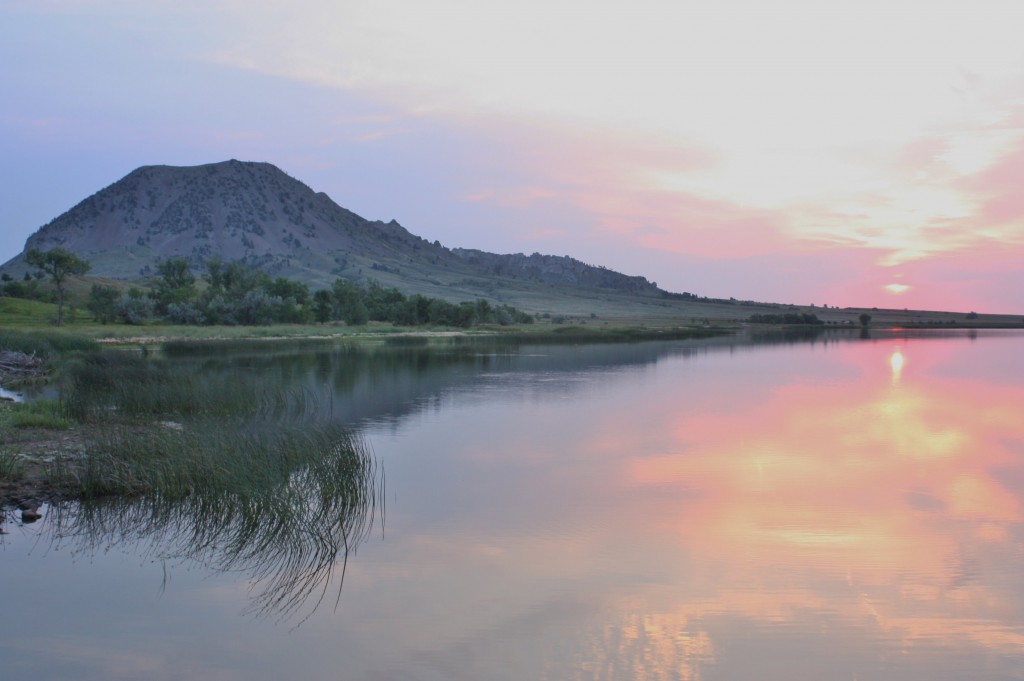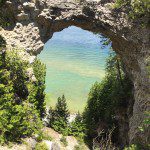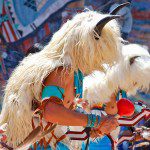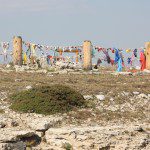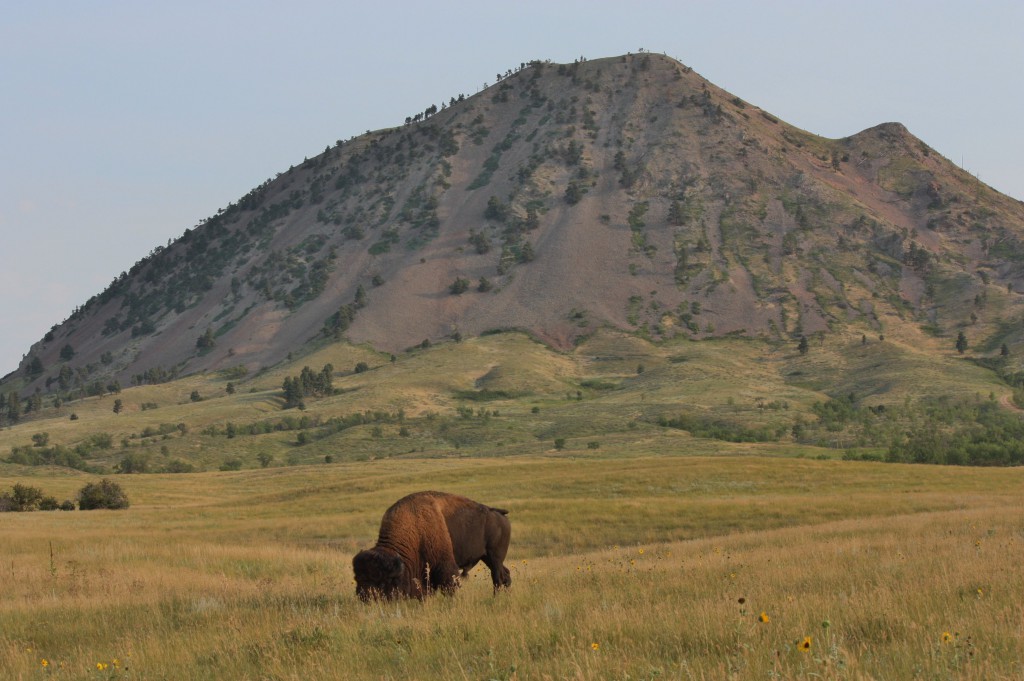
When I started writing this post, my first thought was, “Surely I’ve told them about Bear Butte before.” But I haven’t, at least not at any length. And that’s surprising, because if there’s one place responsible for my fascination with spiritual travels, it’s Bear Butte in South Dakota.
I first visited Bear Butte in my 20s and since then have been back almost every year. Because Bob’s family lives nearby, hiking to its summit has been a nearly annual event. It took me a few years to realize that what I was doing was a spiritual ritual. Through the decades I’ve grown grayer and the babies I once carried on my back are grown men. Bear Butte hasn’t changed nearly as much as I have.
I’ve come to love this worn and ancient mountain, which has given me more than I can fully express. I write about it with mixed feelings, because there are already enough people visiting Bear Butte and it doesn’t need any more publicity (and please, Steven Spielberg, don’t make a movie about it, like you did at Devils Tower). But because it’s taught me so much, about myself and about reverence, it belongs on Spiritual Travels.
Technically Bear Butte is not a butte at all, but rather a small mountain that stands just east of the Black Hills. It’s both a state park and a holy site for many Plains Indian tribes, including the Lakota and the Cheyenne. Surrounded by prairie, it has been formed from volcanic rock that has been worn into its present shape over millions of years. The Lakota people call it Mato Paha or “bear mountain,” a reference to the fact that its profile resembles a sleeping bear. Revered leaders like Red Cloud, Crazy Horse, and Sitting Bull all visited this mountain to pray, and it continues to be a place of pilgrimage for Indians throughout the United States and Canada. Vision quests, sweat lodges, and other ceremonies are frequently held on the mountain.
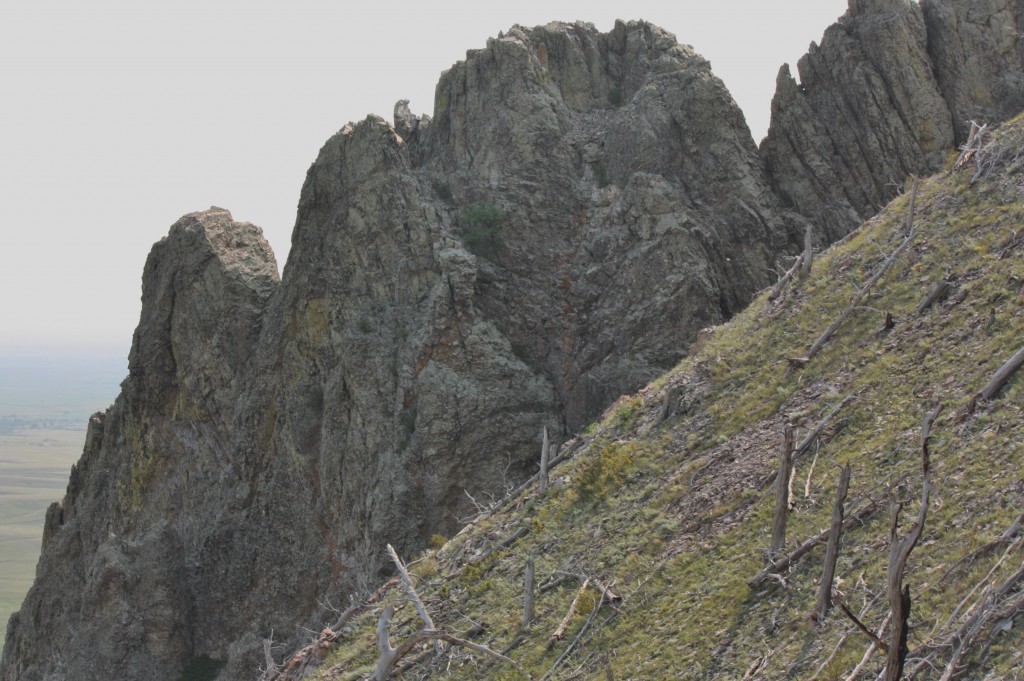
Many of the issues raised by Devils Tower are also present at Bear Butte, for holy sites and recreation often don’t easily mix. At Bear Butte, government officials have attempted to deal with these difficulties by reserving part of the mountain for Indian ceremonial use. As a non-native one can make the hour-long hike to the top of Bear Butte, but other areas are off limits. People are also asked not to take photographs of any religious artifacts.
Even on the public trail to the top, there are many reminders that this is holy ground. Almost every tree and bush is draped with pieces of cloth and strung with tiny bundles of tobacco, which is regarded as a sacred herb by Indians. Some of the offerings are faded and weathered by the sun, while others are clearly recent. Sometimes you can hear the sound of drums as you climb Bear Butte, a muted heartbeat that seems to come from deep within the rocks.
The mountain is nearly treeless because of a fire that swept over it in 1996, a blaze that destroyed ninety percent of its vegetation. For a time blackened stumps covered its steep slopes, but by now most of these have fallen and are slowly returning to the earth. To me Bear Butte feels purified, stripped down to its backbone of rock and soil. Because it is so exposed to the elements, the hot sun and nearly constant wind can be merciless in the summer. If you’re looking for a pleasant afternoon hike, this is not the place to come.
I’m sure quite a few people visit Bear Butte without it making much of an impression on them. Among the many scenic attractions in the Black Hills, it doesn’t take top billing. And I’ve also heard of visitors who have had negative experiences there. One man, a friend of a friend, climbed halfway to the top but then turned back because the mountain felt hostile to him. Another person we know also turned back, because he felt that as a non-Indian he had no right to be there.
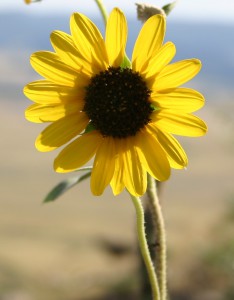
I’ve never felt unwelcome on Bear Butte, but I do have a keen sense that I am a guest there. There is much I don’t understand about its magnetic pull on my spirit. Certainly part of its attraction is that my annual visits have imbued it with personal significance: each time I climb it, I have the chance to reflect on the passage of time and the changes in my life since my last visit. Part of its sacredness, too, is due to the fact that so many people over many centuries have come here for spiritual inspiration, steeping the mountain in countless prayers. And part of it—perhaps the most important part of all—is that Bear Butte has an indefinable quality that elicits awe if one’s heart is open to it.
I’ve hiked it in rain and wind and blazing sun, but on my most recent visit I had the chance to simply bask in its presence. For the first time Bob and I camped at its base, staying at a state park campground near a small lake. A thunderstorm had passed through earlier in the afternoon, cooling the air and awakening the prairie flowers and birds into pulsing, vibrant life. We spent an entire evening looking up at the mountain, watching as the sunlight gradually faded and the stars came out around it. And then a full moon rose. (Honestly, it felt like the mountain was showing off.)
In my next post I’ll tell you a bit more about Bear Butte and its significance for many Indian tribes. For now, let me leave you with this picture of my favorite holy site. Perhaps you have a place like Bear Butte, a much-loved destination you return to again and again, a place that speaks to you without words. If so, count yourself blessed.
